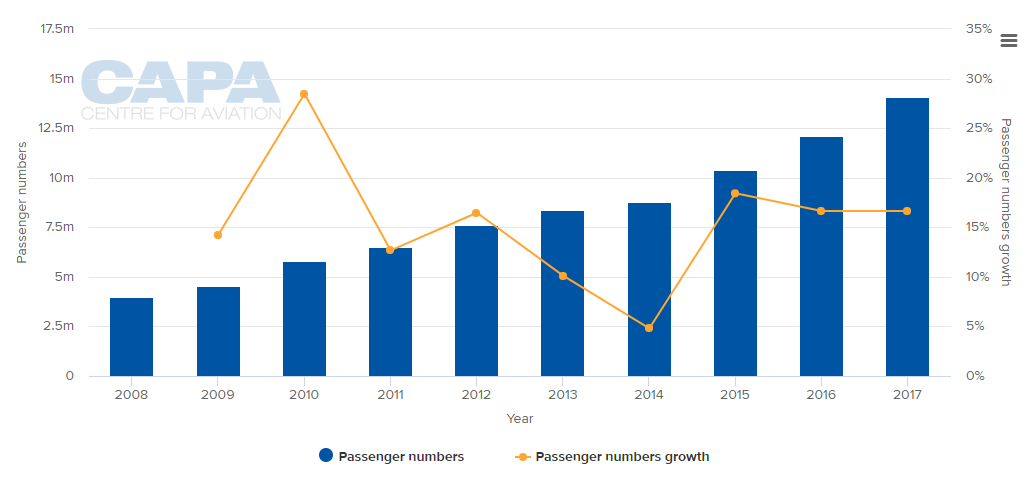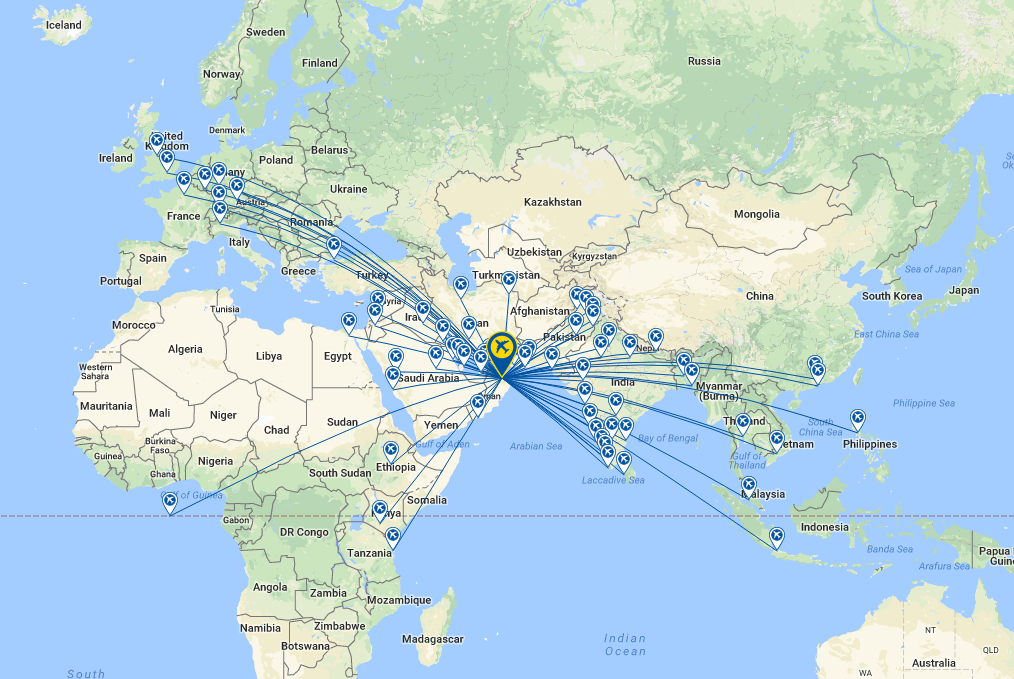NEWS UPDATE: After this post was published, an unexpected announcement from Oman's Ministry of Transport and Communications confirmed that the new terminal building at Muscat Airport will officially open on 20-Mar-2018. Furthermore, all incoming flights and departures from the current airport will be transferred to the new terminal.
The airport, which effectively is a new 580,000 sq m terminal, has been a long time coming. It was original scheduled to open in 2014. The opening date was consistently put back until the end of 2017, and has now been boxed on further, though as a result of the trials it could be opened partially. It will be capable of handling an average of 20 million passengers per annum and the airport aims ultimately to handle up to 48 million passengers per annum.
Presently, traffic is not much more than of a quarter of that amount, at 14 million in 2017. Growth has stabilised at around 16% per annum. If growth were to continue at that rate (it has been as low as 5% and has high as 28% since 2009) the 48 million maximum capacity level would be reached within nine years.
Clearly the new terminal is a necessity but while it remains unopened four years after the original scheduled date there will be lingering concerns.
CHART - Traffic levels at Muscat International Airport have grown at high teen percentage rates over the past three years, increasing the need for additional capacity Source: CAPA - Centre for Aviation and National Centre for Statistics and Information. Sultanate of Oman
Source: CAPA - Centre for Aviation and National Centre for Statistics and Information. Sultanate of Oman
Meanwhile, an inadequate two-storey terminal building is in place. While it has been extended several times it often becomes congested in certain areas and it lacks air bridges. Francois Bouteiller, the former CEO of SalamAir, Oman's first budget airline, expressed concerns over congestion last year, noting the limited ramp size and the need to transfer all passengers by bus to and from parked aircraft. SalamAir has 5% of the seat capacity at the airport, the second highest but far below that of Oman Air.
The new terminal may improve his airline's prospects a little in that the existing one, to be renamed Terminal 2 when the new one opens, will be designated to handle low-cost flights. Meanwhile the new terminal will have air bridges - 29 of them - but also 30 remote stands.
VIDEO - New Muscat International Airport terminal walk-through
In addition to the new terminal, a second runway was added in 2016, to the north of the new terminal so that there are two parallel runways with the capability of handling an A380.
Other works include a new 90-room hotel, warehouse and maintenance services facility for the terminal building; office and storage facilities. Separately, work is underway on preparing feasibility studies and a business model for a 30,000 square foot cargo village project handling 250,000 tonnes of cargo per annum that is expected to increase the airport's airfreight and logistics revenue by OMR30 million (USD80 million) from 2020. The developer aims to commence operations in the initial phase of the project in Jun-2019. DHL Express plans to establish a new airside and ground operations facility there. The Ministry of Transport and Communications is weighing in by developing the supporting road structure.
MAP - Muscat International Airport has a comprehensive route system across the Middle East and Indian sub-continent, and it stretches in to Asia Pacific, East Africa and Europe but not to the same degree Source: CAPA - Centre for Aviation and OAG (data: w/c 29-Jan-2018)
Source: CAPA - Centre for Aviation and OAG (data: w/c 29-Jan-2018)
That network has permitted Oman Air, which has 55% of seat capacity, to begin to operate a hub at Muscat. Until fairly recently it was a point-to-point carrier. But it needs a working, modern, capacity-unrestrained airport environment in which to do it.